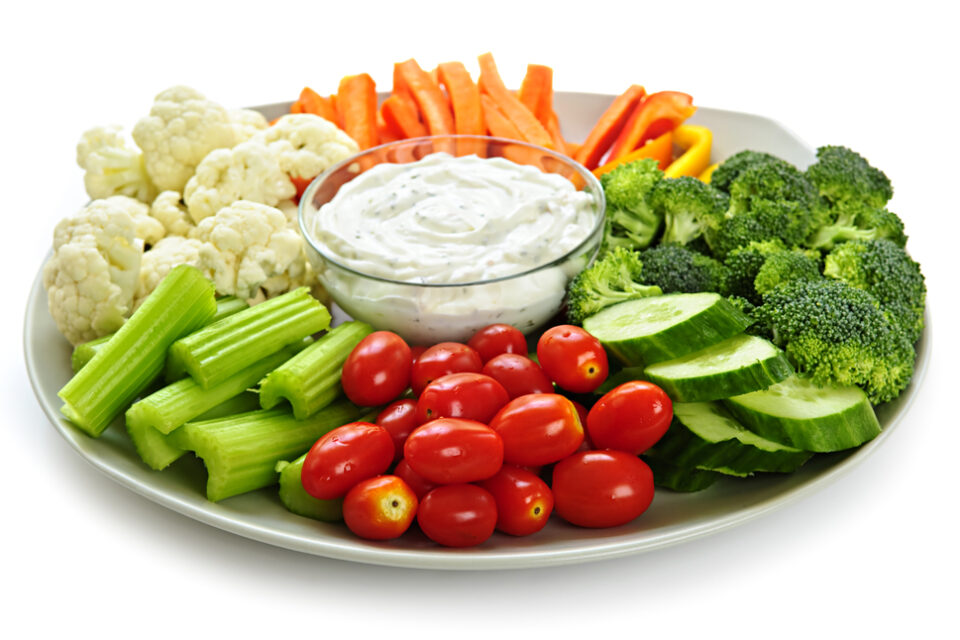I’m often asked what do I normally eat in a day to help control my diabetes? Well I’ll tell you, but you might not like my answer, especially if you dislike vegetables. I eat a ton of raw vegetables mainly because I like them and I find they do not adversely affect my blood sugar. I generally buy a large veggie tray each week from Costco to munch on. I like the color of vegetables, the taste, the crunch and the cleanness they evoke. I also like cooked vegetables, just not as much. Additionally, I like a variety of different nuts. So, breakfast might be a bunch of raw vegetables along with dip, and a handful of nuts. Weird I know, but I like it and it keeps my blood sugar in check. Other mornings I might opt for a bowl of old-fashioned, cooked oats sprinkled with ground cinnamon and nuts. Homemade Muesli is a favorite too:
Homemade Muesli
1/2 cup raw old-fashioned oats
handful of nuts
1/2 tsp ground cinnamon
handful of chopped dates or raisins, optional
1 tsp sugar substitute of you choice
1/2 chopped apple or a handful of fresh berries, optional
unsweetened almond milk for serving
Some mornings, I choose to make bacon or some other breakfast meat with eggs. Eggs are versatile so I make my eggs in a variety of different ways. Depending on my mood, I might fry or scramble my eggs, soft boil, hard-boil, make them into a frittata or omelet. I often will serve this sort of breakfast with one of my sugar-free breakfast items such as coffeecake, muffins, biscuits, etc.
My Cream Cheese and Green Olive Scrambled Eggs
2 large eggs
1 or 2 oz. original cream cheese, cut into small cubes
5 or more sliced or chopped pimiento-stuffed green olives
Add eggs to small bowl and scramble. Add cubed cream cheese and chopped or sliced olives. Melt a small amount of butter in a small skillet. Add egg mixture and scramble. Transfer to plate and garnish with parsley and/or paprika.
Whole-grain pancakes and waffles I make from scratch, are also a favorite breakfast of mine, served with butter and sugar-free pancake syrup of course. Sometimes I add berries to the batter or on top. However, at times doing so will spike my blood sugar a tad too much. I will often test my blood sugar level beforehand to determine how to proceed.
Lunch for me is typically some sort of leftover from my dinner the night before, or a bowl of soup, salad, or both.
Snacks are always a favorite of mine. I might pop a few kernels of popcorn, eat some raw veggies, have a hard-boiled egg, or make some deviled eggs. Nuts are tasty, so are pork rinds, as well as a peeled avocado. Apple slices with peanut butter. I like Dave’s low-carb bread toasted and spread with peanut butter, but it spikes my blood sugar a bit. I typically will counter this by taking a 500 mg Berberine capsule along with my regular meds. There are usually some sugar-free cookies lurking in my kitchen somewhere for my enjoyment too.
Oh, I forgot, yogurt! I’m coming back to revise my original post. I like snacking on yogurt. I buy plain, unsweetened, organic whole milk yogurt and add to it. Stonyfield Farms is my preferred brand. I occasionally, very occasionally, will make my own yogurt, though. Below are some of the additions I add:
Flavored Yogurt
1 cup plain whole milk yogurt
few teaspoons fresh berries, sugar-free jam or preserves
few teaspoons sugar substitute of your choice
handful of nuts
Surprisingly, a tablespoon of peanut butter along with a couple teaspoons of sugar substitute added to plain yogurt is also good!
Dinner the final meal of my day, usually consists of a protein in the form of meat, poultry, fish, or seafood, accompanied by a salad and some variety of a green, cooked or steamed vegetable.
What do I drink throughout the day? I mostly drink water, unsweetened hot tea and coffee, Diet Snapple and diet soft drinks. Homemade lemonade, homemade iced tea and spiced tea are also refreshing. Of course these are made with sugar substitutes. When my blood sugar is entirely too high, I might have a glass of red wine to bring it down. This especially helps me with my fasting blood sugar.
So there you have it, a typical meal day in my diabetic life. Hopefully, you can take a bit of this information to help you with your dietary needs. I caution you to run anything you find questionable by your doctor before proceeding, however.
I’m convinced that if I were to add “intermittent fasting” along with exercise to my diet, I could most likely put my diabetes in remission. But working in the food industry cooking and baking all day and night, being continually surrounded by food 24/7, would require herculean strength and discipline not to taste the food I’m tasked with preparing.

